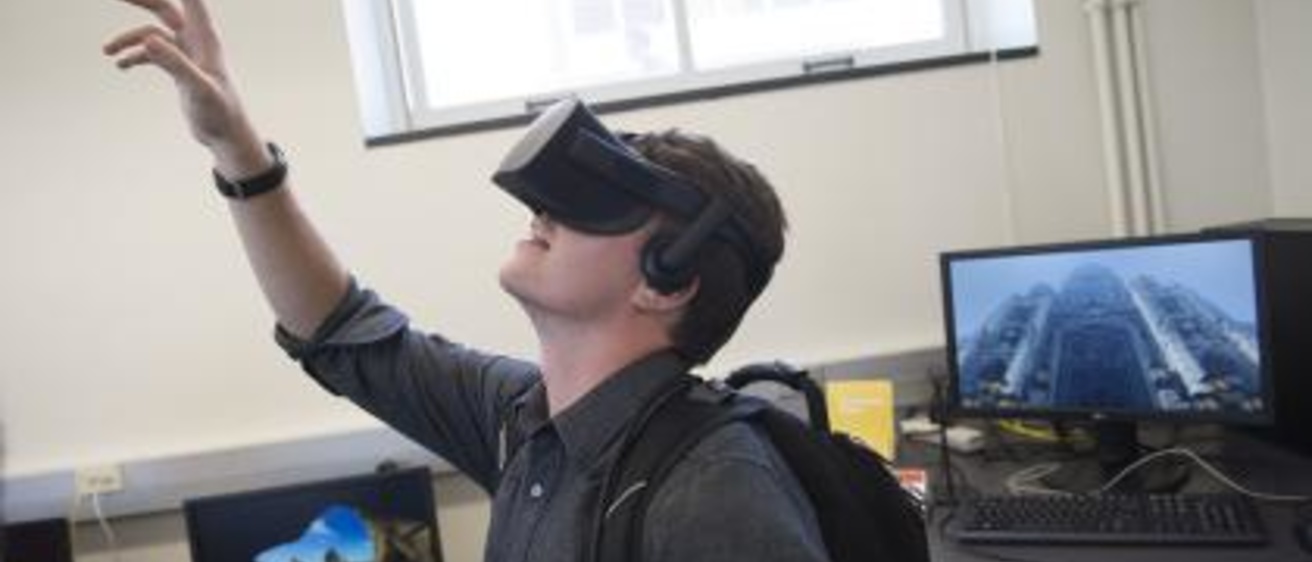By: Andrea Zeek
UI Strategic Communication
University of Iowa students have a new resource to explore the latest in virtual reality, 3-D scanning and modeling, and wearable technology.
In collaboration with the UI College of Engineering, the Lichtenberger Engineering Library has opened a Creative Space on the second floor of the Seamans Center (2001C). The newly renovated room in the library includes tinkering stations featuring different technologies and tools, as well as collaborative work areas with white boards and computer monitors that can split into as many as four independent screens.
Engineering Librarian Kari Kozak says the new space was designed to spark the imaginations of students, faculty, and staff and to help them turn their ideas into reality.
“It’s great that we now have a dedicated Creative Space where people will be able to imagine, tinker, design, and—ultimately—create new and innovative projects,” Kozak says. “I can’t wait to see what they’ll do with all of the new tools.”
Virtual reality
The Creative Space’s virtual reality station is equipped with a powerful computer and video card that allow for hours of virtual reality creation and display. Students can check out 360-degree 3-D cameras; Leap Motion controllers, which sense the movement of your hands and display them in 3-D; and a headset called an Oculus Rift, which students can use to experience virtual reality environments.
3-D scanning and printing
The Creative Space features four types of 3-D scanners, including the Xbox Kinect, which has a scanning range starting at 48 inches. After objects are scanned, they can be sent to the Engineering Electronics Shop or the Engineering Machine Shop to be printed in 3-D. The most affordable 3-D printer is the MakerBot, at a rate of 20 cents per gram for UI faculty, staff, and students. It would cost about $18 to print a coffee mug that is 4 inches tall and 4 inches in diameter.
Creative kits
Don’t know what you want to create? That’s OK. Kozak also has designed a variety of “creative boxes” tailored to different interests, such as e-textiles, programming and hardware, and motorized robotics. One box includes the MaKey MaKey, a tool with which you can turn anything into a keyboard by connecting alligator clips to your desired touchpoints. For example, you could turn bananas into the keys of a piano.
Caleb Mann, a first-year biomedical engineering student, says he thinks the Creative Space will make it easier for him to experiment with new concepts in engineering.
“I feel like the encouragement of ideas is really helpful,” Mann says. “I’m really excited to brainstorm.”
The Creative Space is open during the Engineering Library’s regular hours. Visitors should work with library staff to check out different tools in the space.
